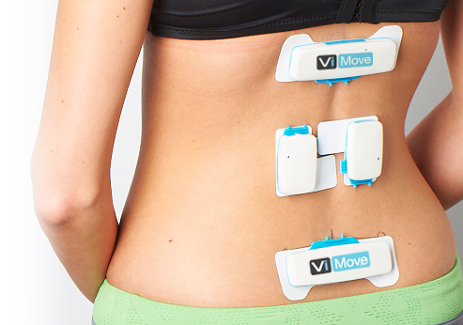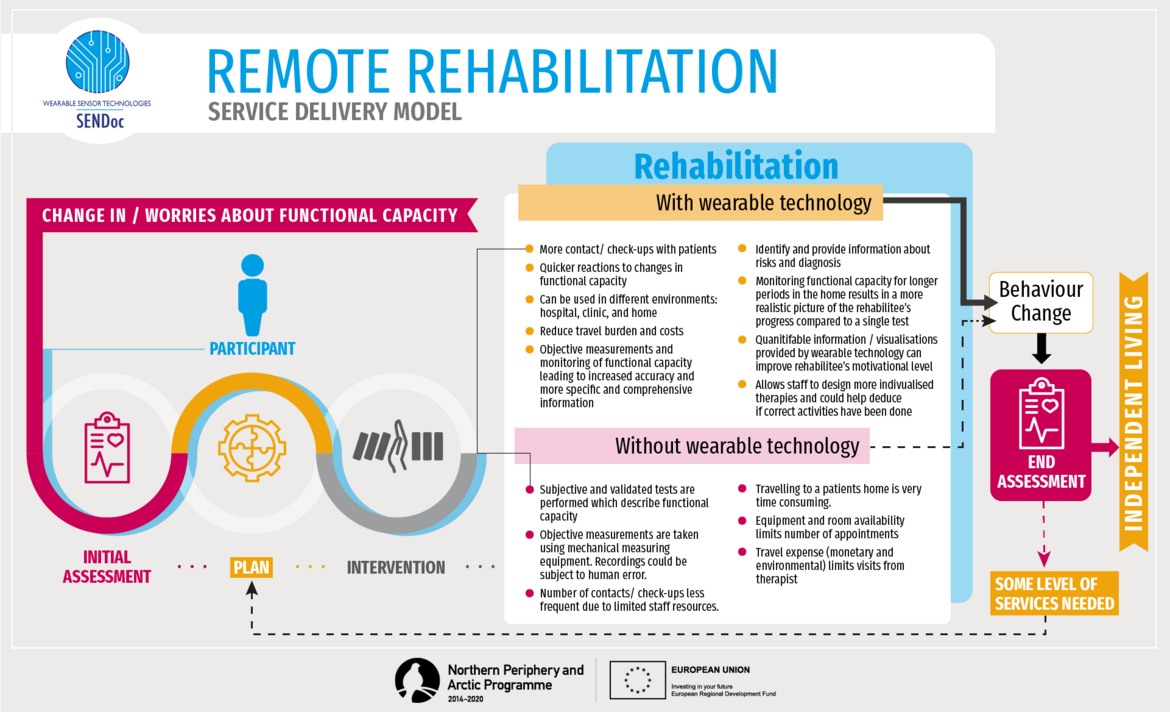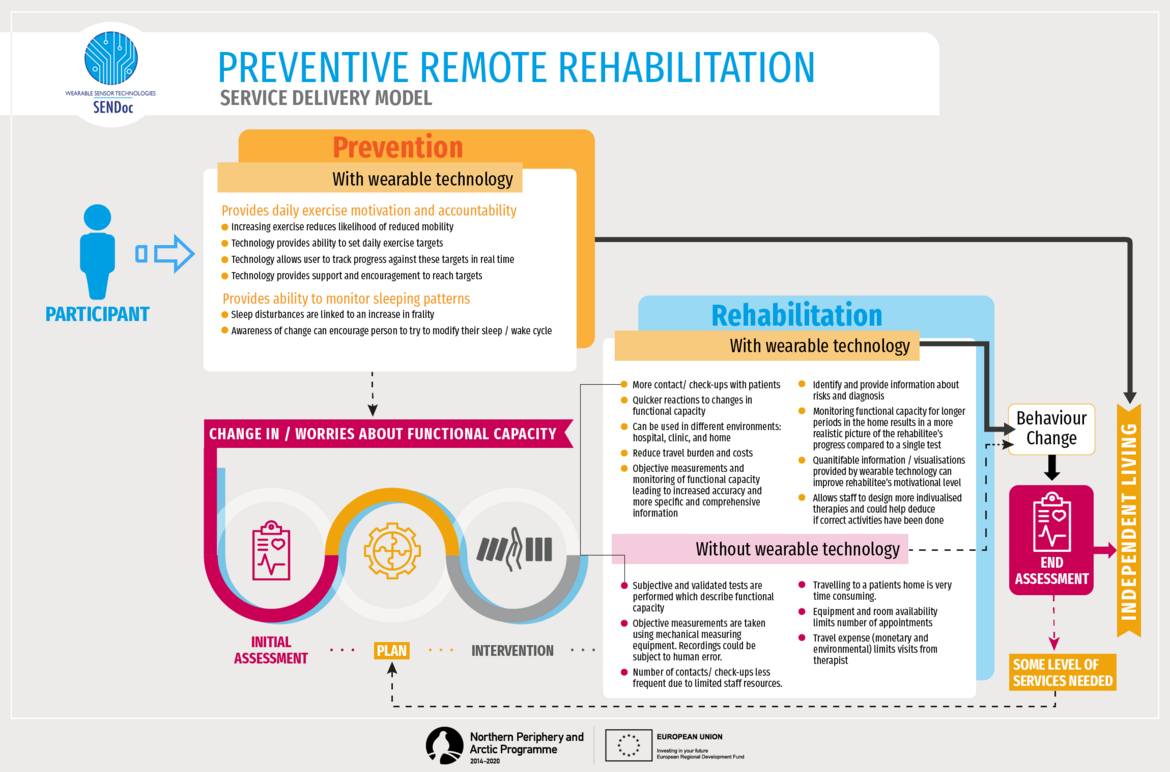Outputs and Results
SENDoc has delivered a number of products and services in relation to wearable sensor technologies being utilised in health. These include a report and a guide, 13 demonstrator projects, a service delivery model and a tested and refined wearable system. The video below showcases the main highlights from the SENDoc project.
Report on technology supported home rehabilitation services in rural areas
Current knowledge in the area of wearable sensor technology in Health was researched, and a report was created to define central concepts relating to the current use of wearable sensor technologies in home rehabilitation. Additionally, it includes analysis of current end-user feedback on acceptability and usage of wearable sensor systems. Also included are references to specific conditions prevalent in ageing communities such as Rheumatoid Arthritis, Diabetes and Parkinsons Disease. The completed report can be viewed here.
Guide to introducing wearable sensor technologies in home rehabilitation
The Guide to introducing wearable sensor technologies in home rehabilitation was developed to assist and orientate rehabilitation staff and organisations who are planning to start remote home rehabilitation activities, particularly with the older persons. The ideas and suggestions for the remote rehabilitation process in the document can be easily adopted to any kind of functional capacity problem in rehabilitation. The Handbook focuses on the attributes and aspects that you must consider when you start a remote rehabilitation process with remote connections and wearable sensor systems. The guide includes challenges and best practice on systems installed and tested. The guide can be viewed here.
A virtual guidelines video was also produced as part of this output - please see below.
SENDoc Rehabilitation Demonstrator Projects
For this output, the 4 partner regions (Ireland/UK/Sweden/Finland) ran in total 13 demonstrator projects which tested sensor technologies in rural ageing communities.
Demonstrator projects were based on utilising sensors to detect frailty (mobility, strength and balance), wellbeing and safety for ageing groups in rural communities.
Regional and transnational patient groups and clinical bodies were consulted on potential user acceptability and functionality of a range of sensor technology choices. Technology included a combination of commercially available sensors and sensors at earlier stage development. Click here to view the full report.
Home-Based Rehabilitation Service Delivery Model
This output has produced a generalisable and transferable, online, home-based rehabilitation service delivery model. The model was based and derived from previous outputs. Specifically, results from the main demonstrator projects have informed the proposed service delivery model based on what did and didn't work well during the project. The user guide output was used for reference when defining the new delivery model, informing current best-case technologies for a range of particular remote ageing community needs.
Two models were produced as part of this output; one showing how the traditional rehabilitation programme could be delivered using wearable sensors, and another "Preventive" model showing how wearable sensors can be incorporated into daily life, delaying or perhaps mitigating altogether the need for rehabilitation intervention. The completed Service Delivery Model report can be viewed here. The two separate models are viewable below.
A tested and refined wearable sensor system
This output focused on examining the usability aspects of wearable sensor systems for the support of independent living in ageing populations from an elderly person’s perspective. The output looks at factors which influence continued wearable sensor system usage, through pilot studies with elders across the 4 regions of SENDoc, which in turn will help device manufacturers refine their products.
The report is viewable here.
Please view the video below to see participants opinions on the selected wearable sensor system.



